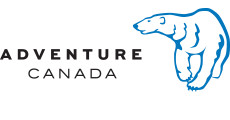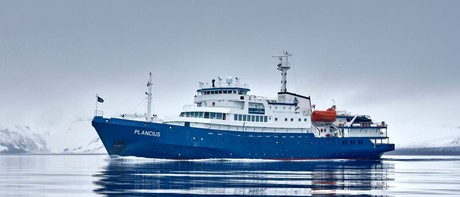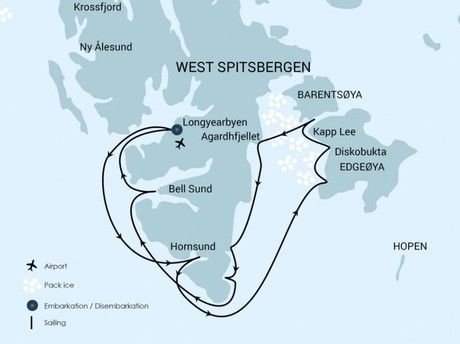East Spitsbergen, Home of the Polar Bear - Summer Solstice
Summer solstice: midnight sun, and 24-hour day
The midnight sun is a phenomenon that occurs during the Arctic summer, when the sun is visible for a full 24 hours in fair weather. The summer solstice in Longyearbyen falls on 21 June, The term solstice (Latin solstitium) means “sun-stopping” and describes the point on the horizon at which the sun appears to rise and set, stopping and reversing directions after this day. On the solstice, the sun does not rise precisely in the east but rather north of east, then later sets to the north of west, making the sun visible for a longer period of time. It will not be until late August that the sun fully goes down again, and then only for a few minutes.Join us in experiencing this fascinating phenomenon during this voyage through the Arctic wilderness of Svalbard.
Highlights
• Zodiac Cruising & Shore Program
• Shore-Based Walking
• Barentsøya
• Edgeøya
• Kittiwake
• Polar Bear
• Walrus
• Ivory Gull
|
Book now |
Quadruple Porthole

Twin Porthole

Twin Window

Superior

Triple Porthole
Twin Deluxe
Vessel Type: Expedition
Length: 89 metres
Passenger Capacity: 108 - 116
Built / refurbished: 1976 / 2009
M/v “Plancius” accommodates 116 passengers in 53 passenger cabins (108 passengers as of season Arctic 2020) with private toilet and shower in 4 quadruple porthole cabins, 2 triple porthole cabins, 9 twin porthole cabins, 26 twin cabins with window and 2 twin deluxe cabins, all (ca. 12,5 square meters) and 10 twin superior cabins (ca. 21 square meters). All cabins offer lower berths (one queen-size bed in the superior cabins and two single beds in the twin cabins), except for the 4 quadruple cabins (for 4 persons in 2x upper and lower beds), and 2 triple cabins (1 bunk bed plus 1 lower bed).
The vessel offers a restaurant/lecture room on deck 3 and a spacious observation lounge (with bar) on deck 5 with large windows, offering full panorama view. M/v “Plancius” has large open deck spaces (with full walk-around possibilities on deck 4), giving excellent opportunities to enjoy the scenery and wildlife. She is furthermore equipped with 10 Mark V zodiacs, including 40 HP 4-stroke outboard engines and 2 gangways on the starboard side, guaranteeing a swift zodiac operation. M/v “Plancius” is comfortable and nicely decorated, but is not a luxury vessel. Our voyages in the Arctic and Antarctic regions are primarily defined by an exploratory educational travel programme, spending as much time ashore as possible. Plancius fully meets our demands to achieve this. The vessel is equipped with a diesel-electric propulsion system which reduces the noise and vibration of the vessel considerably. The 3 diesel engines generate 1.230 horse-power each, giving the vessel a speed of 10 - 12 knots. The vessel is ice-strengthened and was specially built for oceanographic voyages. M/v “Plancius” is manned by an international crew of 37 (18 nautical crew and 19 hotel crew), 8 expedition staff (1 expedition leader, 1 assistant expedition leader and 6 guides/lecturers), and 1 doctor.


Inclusions
• Voyage in selected accommodation category
• All meals while on board the ship
• Coffee and Tea while on board
• All shore excursions and landings by zodiac as per the itinerary
• Lectures held on board by Expedition Team and natuarlists
• Port Charges/Taxes
• Comprehensive Pre-departure materials
Exclusions
• International and domestic airfares whether commercial or charter
• Pre and Post-voyage accommodation
• Passport and visa costs if applicable
• Travel insurance including medical evacuation cover
• Beverages not listed in inclusions
• Any items of a personal nature including any medical costs incurred on board
• Meals when not on board the ship
• Gratuities (Recommended USD$15 per passenger per day)
Our Associates Include







